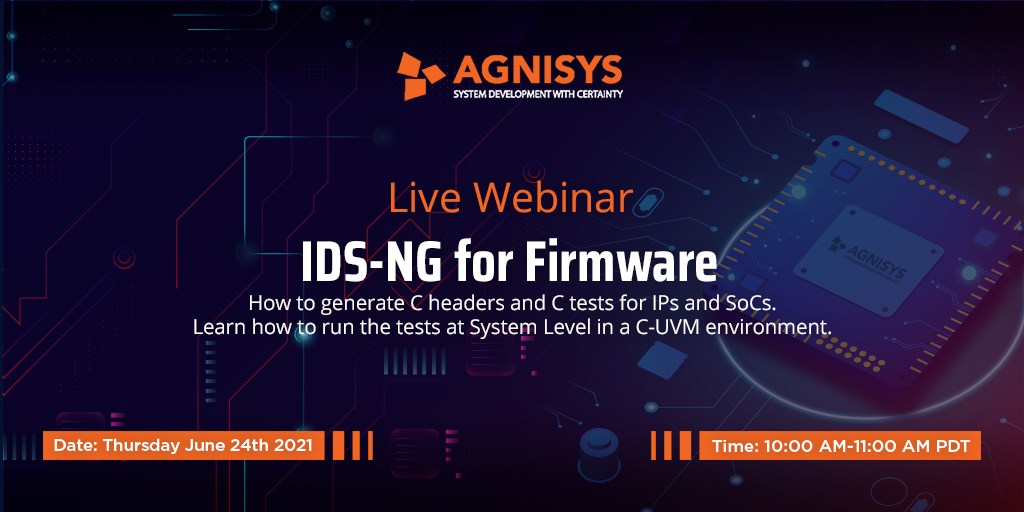A sequence is an ordered set of transactions on various interfaces/ports of a device. Often, a sequence is a continuous set of steps that involve writing/reading specific bit fields of the registers in the IP/SoC and need to be executed in order. Sequences can be used for setting configurations, resetting the device, powering it up, and testing its functionality. These sequences can be simple, or complex involving arrays of registers, loops, waits on events, parallelism, etc. IDS NextGen (IDS-NG) is a multi-platform product that helps users create an IP and write portable sequences for it:
How does IDS-NG help a firmware developer?
- Creates C based header files and tests automatically
- Ability to create custom programming sequences and test sequences.
- Standard APIs for Standard components that can be used to create larger sequences
With the help of IDS-NG, user-defined sequences can be created. With the help of IDS-NG, user-defined sequences can be created. Not only is the C Code generated from them, but also UVM sequences for verification, SystemVerilog sequences for validation, and various output formats for automatic test equipment (ATE).
This webinar provides an overview of IDS-NG and shows how users can target firmware and software with it.

